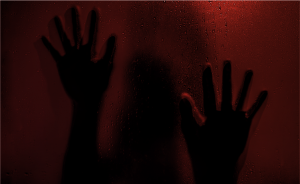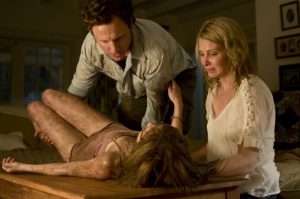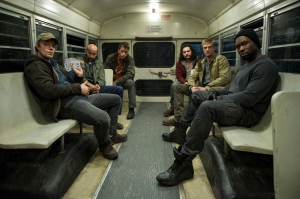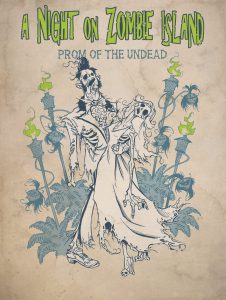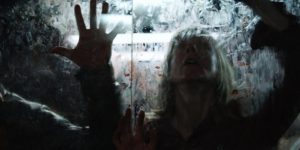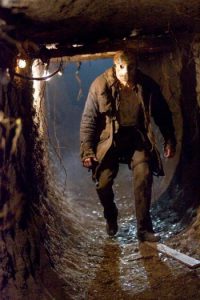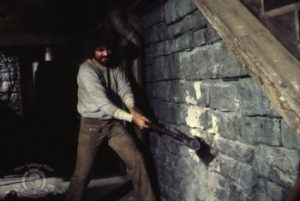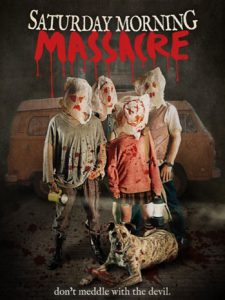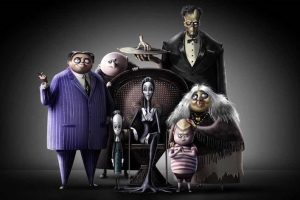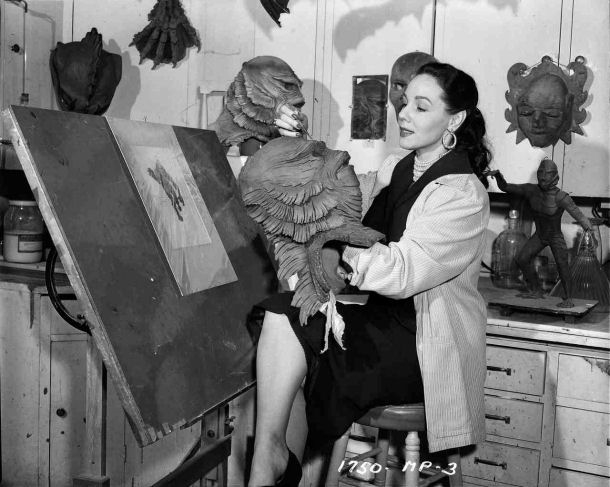
The Best Horror Movie Monsters that Used No CGI–Part 2
As promised last week, here is Part II of the best CGI-free monsters of horror. This round focuses on the full-body creations and the inimitable puppets that have worked their way into our gore-loving hearts. (If you’re looking for the straightforward makeup designs, then check out Part I.)
So in chronological order, here are this week’s ten best.
Creature from the Black Lagoon
Though many readers probably eschew the Creature, claiming he looks dated and phony, the truth is that the design is still a beautiful artistic rendering that takes into account texture, color, and perhaps most impressively, environment. Just making a cool monster is hard enough, but as Steven Spielberg learned two decades later, trying to put one underwater is another thing altogether. While two different actors played the monster—one above water and one below—the design works equally well whether the Creature is terrorizing the passengers aboard an Amazon expedition or swimming away underwater in a spectacular flurry.
But for all of the drama onscreen, perhaps the more interesting story was happening behind-the-scenes. The Creature’s design was long credited solely to Bud Westmore, a major makeup designer at Universal in the 1950s. However, Westmore was not the only one who worked on the Gill-Man. An actress-animator named Milicent Patrick contributed so much design input on the project that Universal tried to bill her as “The Beauty Who Created the Beast”.
Unfortunately, however, this was America in the 50s, and Bud Westmore couldn’t have a woman showing him up. To ensure his reign of chauvinism continued, he threw a well-publicized hissy fit, commandeered full credit for the Creature, and ultimately derailed Patrick’s makeup designer career in the movies.
So the next time you think of the Creature from the Black Lagoon, remember the name Milicent Patrick, a promising woman who once looked to be the next great creature feature designer—that is, before her life and profession were wrecked by a buffoon.

Jaws
Like the Creature before him, Bruce the Shark—a name Spielberg allegedly chose in honor of his attorney—had to function underwater. But unlike Universal’s Gill-Man, the shark didn’t get the option to hang out on the beach and petrify the locals. Bruce was submerged in water in virtually every scene he appeared. Consequently, the entire movie was almost scrapped after the animatronic sharks kept malfunctioning, inflating the budget far past expectations. Ultimately, Spielberg along with the cast and crew managed to pull it off, but the film goes down in cinema history as having the most difficult, albeit fake, marine life ever committed to screen.
These days, some horror fans talk smack about Bruce, calling his design half-baked or corny. But Jaws not only redefined the horror genre, it also ushered in the era of the summer blockbuster. Not too shabby for a project nearly abandoned due to a diva shark.

Alien & Aliens
The titular Alien is now so ubiquitous in our consciousness that you don’t realize upon first viewing the film that you’re actually getting a lesson in alien biology. In fact, the whole movie could be seen as just one long science seminar on the life cycle of the xenomorph, from egg to facehugger to chestburster to full-sized alien to Lieutenant Ellen Ripley’s prey. Audiences have come to expect this biological process so much that the fourth installment had to create more Ripleys just to keep up.
Thank H. R. Giger for cinema’s greatest extraterrestrial. Unlike an ordinary artist who might have a vague understanding of a creature’s inner workings, Giger knew every aspect of the alien down to the most obsessive (and phallic) details. But that’s not to say he understood everything about makeup and special effects. Some sources say when Giger came up with the Alien design, he didn’t know what latex was; instead, he wanted to construct the costume out of actual dead animals. And you thought a guy in an elaborate rubber suit was scary.

An American Werewolf in London
Rick Baker’s anglophile werewolf is arguably the gold standard of CGI-free special effects. It’s at least the gold standard of Oscar-winning effects seeing that it was the first Best Makeup winner.
Although I will forever remain a bigger fan of The Howling, nobody can deny that transformation sequence in American Werewolf. Even when you watch it today, you can’t find the seams. You’ve got to search for how Baker executed the effects. Thirty-three years and millions of computer generated movie tricks since, and David Naughton’s worst day ever still reigns supreme. And his equally unlucky friend, played by Griffin Dunne, also gets one of the best cinematic gore decays as he wisecracks post-mortem in every dark crevice of London’s underground.

The Thing
The world of horror effects is smaller than you think. On last week’s list, I featured The Exorcist and its Reagan makeup designed by Dick Smith. On the set, Smith trained and worked with Rick Baker. As you already know, Baker went on to win a trove of Oscars for his horror makeup. He also trained Rob Bottin, who designed the creature in The Thing. It’s like watching great makeup artists impart their horror DNA right before our cinema-loving eyes.
Everything about The Thing is cool, literally and metaphorically. With a cast of amazing characters spouting crazy quotable dialogue amidst some of the tautest tension ever seen in a horror film, the special effects needed to step up to the challenge. And Bottin’s sticky, organic designs did not disappoint as they make your skin crawl and cause you to keep a careful eye on the person sitting next to you. Because honestly, haven’t all of us horror fans wanted an excuse to stick a hot wire in a Petri dish of blood?
Stan Winston also offered his expertise with the dog sequence, one of the best scenes in the film. But between the Huskies, the collapsible chest cavities, and the finale’s Cthulhu-worthy tentacles, it’s almost impossible to pick your favorite sequence. The effects are that timeless.
Gremlins
Given their mass integration into modern pop culture, the Gremlins from Joe Dante’s 1984 black-as-pitch comedy can easily be overlooked as disposable. After all, even non-horror fans recognize the name Gizmo, and you’d be hard pressed to find somebody who’s never heard of the three cardinal rules of raising a Mogwai. But much of this love and devotion comes from the incredible creature designs that in many ways, remain unparalleled to this day.
With future Oscar-winner Chris Walas at the effects helm, Gremlins ensured that the masses knew that puppets weren’t all Lampchop and Kermit the Frog. From Gizmo to Stripe and almost every monster in between, these guys have personality. You know what they like (booze and madcap hijinks), you know how they’re feeling (anger, hunger, eager for world domination), and you know you want to stay out of their way. Extra impressive when you remember the animatronics and servos all fit into a tiny scaly package.

The Fly
Another Oscar-winner for Best Makeup, The Fly showcased the collaboration between Gremlins’ Chris Walas and makeup artist Stephan Dupuis. With eight distinct versions of the “Brundlefly”, actor Jeff Goldblum goes from a slight rash to whole body decay to not even being able to play the part in its final incarnation: a full-sized fly puppet with the saddest eyes ever seen in the history of entomology.
Given the time period, many argued that The Fly was a parable about AIDS, but director David Cronenberg maintains that he wasn’t channeling any disease in particular but instead the inescapable process of aging itself. That’s why, some thirty years later, the sympathetic mad scientist’s tragic deterioration still packs a wallop. It represents life, and we’re all Brundleflies.

Henrietta in Evil Dead II
There are so many elements in the Evil Dead series worthy of reverence. And Greg Nicotero’s effects for Evil Dead II are certainly chief among the franchise’s successes.
Every aspect in the film blended scares with laughs, a precarious venture that paid major horror dividends. But with so many great things to choose from, the possessed housewife Henrietta is perhaps the most unforgettable. Being the coolest sibling ever, Sam Raimi’s brother Ted took one for the guerilla filmmaking team and donned the Henrietta getup.
The costume, however, is famously known for having caused Ted to sweat—quite profusely at that. In some of the scenes where Henrietta oozes liquid, that’s not effects. That’s straight-up perspiration. Proof positive that the most basic tricks are always the grossest.

Pumpkinhead
On editorial lists like these, Pumpkinhead doesn’t often get the accolades it deserves. That’s probably because even though the story isn’t terrible, the monster is exponentially better.
Like the Fly, Pumpkinhead evolves over the course of the film. He starts out as a fetal corpse in one of the creepiest graveyards this side of Hammer’s Bray Studios. After a blink-and-miss-it transformation into a cranky teen, Pumpkinhead turns into the visage we all know and fear before transitioning into a monster that bears a striking resemblance to Lance Henriksen. Of course, by the last frame, he reverts back to the aforementioned fetal corpse with some minor—and eerie—alterations.
For a movie that clocks in at less than ninety minutes, that’s a lot of variety, especially since a couple of the versions appear onscreen for less than two minutes. But thanks to Stan Winston’s directorial style and the special effects team’s dedication, each Pumpkinhead is just as convincing as the last. If you’ve got ten minutes to spare and want to know the intricacies that went into his design, watch this video. It will make you hate CGI just a little bit more.
Now if only Pumpkinhead could find a plot as effectively creepy as he is.

Chucky in Child’s Play
Imagine the pitch session: a voodoo-loving serial killer invokes ritual and accidentally ends up inside a doll. He makes the most of the predicament and terrorizes his adopted family with gusto.
The Good Guy Gone Bad was in no way a shoe-in for this list. In fact, as great as the puppet is, most people overlook the 1988 treacherous toy masterpiece when they name awesome special effects. That’s partially because Chucky meshes with the overall film landscape so well that you don’t doubt that the My Buddy knock-off might come alive at any moment. Instead, you outright expect it. He’s a spot-on representation of what inspires terror during childhood: a darling object of affection, not only lost, but transformed into a monstrous beast. Heck, that inspires terror even in adulthood. Who’d have guessed that a ginger doll could get under our skin so well?

Honorable Mention: Godzilla
Sure, he’s probably the most old school (read: cheap-looking) monster on this list, but the Tokyo-hating green dinosaur ushered in a new era of monster movies. Yes, once upon a time, putting a guy in a rubber suit and having him stomp around was a novel idea. And an important one for the sake of all effects to come. Even a poorly inserted Raymond Burr in the American release couldn’t deflate this horror movie world power.
There are so many monsters that could have easily made the cut. From Triffids and Tremors to the Puppet Master and Predator, a top ten never comes close to being complete. So add your favorites in the comments below, and tell me why you love them!



